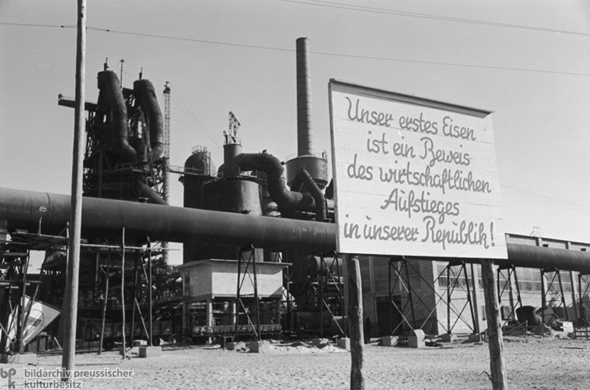Abstract
To safeguard GDR steel production and build up heavy industry (a
central objective of the first Five-Year Plan), the SED’s 3rd Party
Congress (July 20-24, 1950) resolved to build the
Eisenhüttenkombinat Ost [Steelworks
Combine East]. Work began almost immediately, and on January 1, 1951,
the foundation stone for the first blast furnace was laid near the city
of Fürstenberg on the Oder River a few miles from the Polish border. The
choice of location was largely symbolic: the SED hoped to underscore the
brotherhood between East Germans and Poles (and the Eastern bloc as a
whole) by producing “peace steel”
[Friedensstahl] from Ukrainian iron
ore and Polish coal on German soil. But the party also hoped that the
steelworks would boost the regional economy and provide jobs for the
rural population. The first blast furnace became operational in October
1951. Taken shortly thereafter, the photograph below features a sign
that reads: “Our first iron is proof of the economic rise of our
republic.” By 1954, a total of six furnaces had been built.
